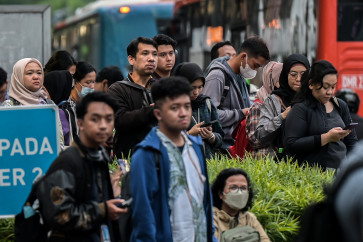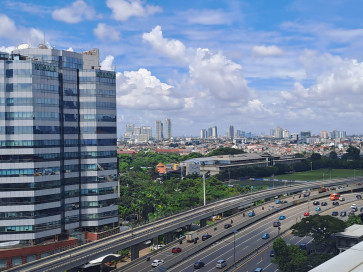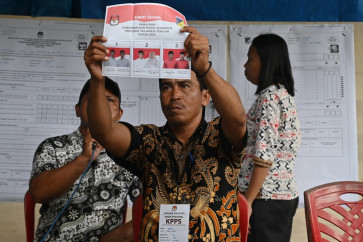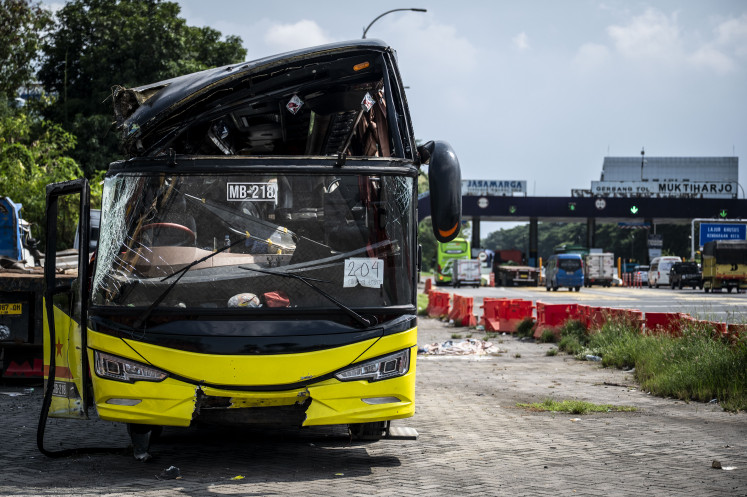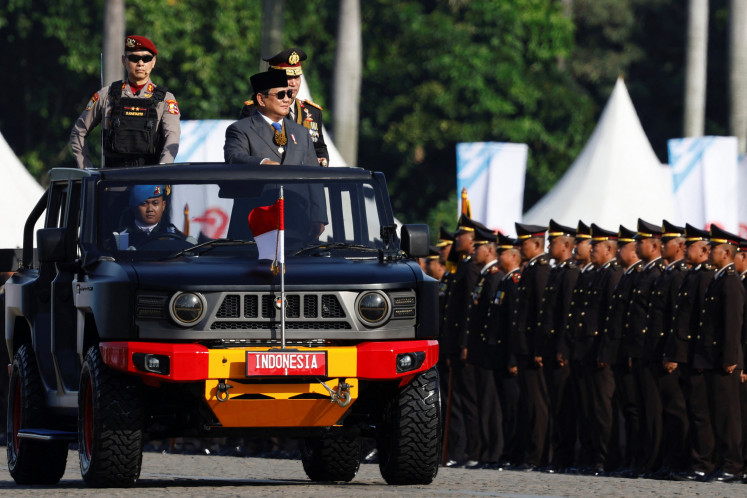Popular Reads
Top Results
Can't find what you're looking for?
View all search resultsPopular Reads
Top Results
Can't find what you're looking for?
View all search resultsPalm oil clusters to start operation by 2014
Two industrial clusters in Riau province that are currently being prepared for the palm oil downstream industry, are expected to begin operation by 2014, enabling the province to become Indonesia’s production hub for processing palm oils
Change text size
Gift Premium Articles
to Anyone
T
wo industrial clusters in Riau province that are currently being prepared for the palm oil downstream industry, are expected to begin operation by 2014, enabling the province to become Indonesia’s production hub for processing palm oils.
The master plan, environmental impact assessment (Amdal) and feasibility study for the two industrial clusters, located in Kuala Enok and Dumai, were complete, Riau Governor Rusli Zainal said in Jakarta on Friday.
“If all runs to plan, the clusters will begin operation by 2014,” he said in a discussion at the Finance Ministry.
Kuala Enok and Dumai were nominated as sites for the clusters in accordance with a 2010 industry minister regulation on the development of Indonesia’s downstream palm oil industrial clusters.
“We need to have such downstream industrial clusters to compete with other global palm oil producers,” he said. Indonesia exports most of its palm oil in the form of crude palm oil (CPO). However, compared to other bigger palm oil producers, Indonesia is far behind in terms of processing technology.
“We haven’t had such industrial sectors, while Malaysia, our biggest competitor, has at least six downstream palm oil industrial clusters, including in Serawak, Kelantan, and Sabah,” he said.
He hoped that the establishment of the industrial clusters in the province would also boost the productivity of oil palm plantations, as they would supply raw materials for factories in the clusters.
“Only plantations owned by farmers can supply the raw materials for factories within the downstream processing industry, and big plantations can not sell their CPO to the two industrial clusters in Riau province,” Rusli said.
The local administration was committed to improving agricultural practices, for example by implementing both sustainable development of Indonesian Sustainable Palm Oil (ISPO) and supporting Roundtable on Sustainable Palm Oil (RSPO).
He played down strong criticisms of Indonesia’s reluctance to pay more attention on environmental aspects of its palm oil industry.
In addition, the local government would also adopt new techniques to improve production, he said.
Malaysia used to have better palm oil production in terms of both quantity and quality, he said. “We couldn’t deny it. [Malaysian] palm oil was much better quality than ours. They used to produce 4 tons per hectare, while we could only produce 2.5 tons per hectare,” he said.
However, Indonesia could now compete with its biggest competitor, but only in terms of quantity, he said.
Riau’s crude palm oil production constitutes around 38 percent of Indonesia’s total CPO output, which is estimated to increase to 22.5 million tons this year from 22 million tons last year. Indonesia produces around 40 percent of the world’s total CPO output.
In developing its natural resources, Riau province had a strong commitment to adopting sustainable practices, he said. Around 1.3 million or 34 percent of the total 4.3 million hectares of the forest in the province would, for example, be set aside as conservation forest areas, according to the province’s spatial planning bylaw, he said.
Under the national regulation, the conservation forest area should not be less than 30 percent of the total forest size, he said. “But we have allocated 34 percent of our forest areas to be listed as conservation forest,” he said.
“We have a clear regulation to avoid any overlapping land use certificates,” he said. Under a 1994 provincial regulation on spatial planning, for example, the local administration had allocated 830,000 hectares for peatland conservation forest. (ebf)


